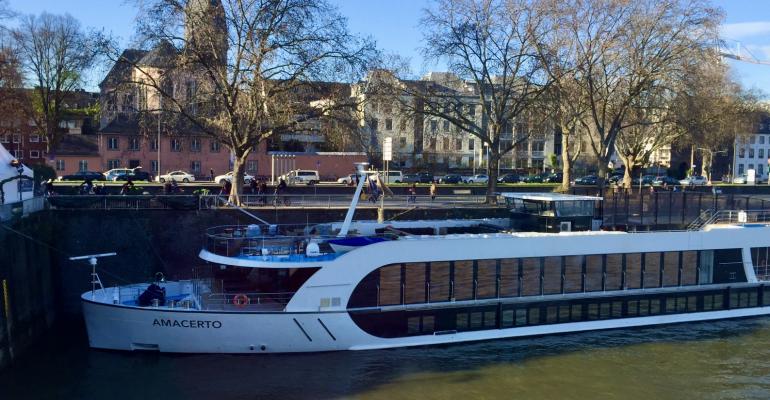In particular, strong 9% growth in the German source market suggests 'homeland cruising' may be important once operations resume.
IG RiverCruise — which represents about 70% of the operators active in Europe, corresponding to some 240 vessels — said the 2019 results should have 'sparked euphoria,' although optimistic projections for 2020 have been 'powdered' by the coronavirus pandemic.
1.79m river cruisers
Overall, 1.79m passengers took a Europe river cruise last year, with the US and Canada accounting for the largest market share (36.7%). Germans followed (28.3%), while the UK/Ireland came third (11.8%).
German market details
Some 541,113 river cruises were sold to the German source market in 2019, up 9%. Passenger nights grew by 7.3%, to 3,763,037. Turnaround increased 10.5%, to €653m.
While the average daily rate was 3% higher, €173.61, and the average cruise price went up by 1.3%, to €1,207, the average river cruise duration went down slightly, to 6.95 nights.
As in the previous year, itineraries positioned in the 'premium' segment were most in demand, 47.8 % of the market, followed by the 'standard' segment with a 34.6% share.
Reversing a supposed trend from the year before, the average age of Germany's river cruise passengers increased in 2019. Almost 35% were in the 56 to 65 range, with 32.6% between 66 and 75. While these two groups increased market share, the 26 to 40 group declined from an 8.3% share in 2018 to 3.8% last year. Also, the 41 to 55 share declined, from 18.3% to 10.3%.
Germans favor the Rhine
Among Germans, the Rhine and its feeders were tops in 2019, accounting for 37.1% of the market, up from 35.9% the previous year. The Rhine maintained its lead for the second year in a row, after many years when the Danube was most popular. The Danube and tributaries followed, with a 34.5% share, from 35.2% in 2018. The French rivers (Seine, Rhone, Saone, Garonne, Loire) were third with a 13.1% share, compared to 12.9% in 2018.
19 new vessels were to debut
According to IG RiverCruise, 19 new river vessels were supposed to enter the European market in the 2020 season. The question remains how many of these will actually start operating this year, and when. But although the COVID-19 pandemic renders any predictions based on last year's results moot, the IG RiverCruise data could still help point to a possible post-coronavirus scenario.
Lessons for the post-coronavirus era?
Generally, the industry was in a very healthy state before the virus, including pricing. This provides a solid basis for a restart of operations.
With Germans the second largest source market for river cruising in Europe last year, 'homeland cruising' could provide an opportunity for the industry once operations resume, possibly at a time when intercontinental travel is still restricted.
Passengers originating from Germany can easily reach turnaround ports along the Rhine and Danube by private car — no bus, train or plane needed.
The Rhine, currently the most popular river among Germans, is suitable for national cruising without having to cross the border. That's true for some of its feeders, too. Also, this could turn river cruising into an early tourism opportunity once travel restrictions start to ease.
Long-term, overseas market key
Despite such potential positives, the IG RiverCruise study made it clear that, in the long run, the future prosperity of river cruising in Europe remains highly dependent on overseas passengers from the US and Canada.
See also 'Europe could be cruising by July, but US 'big unknown': AmaWaterways' Schreiner'
Copyright © 2024. All rights reserved. Seatrade, a trading name of Informa Markets (UK) Limited.
Add Seatrade Cruise News to your Google News feed.  |

